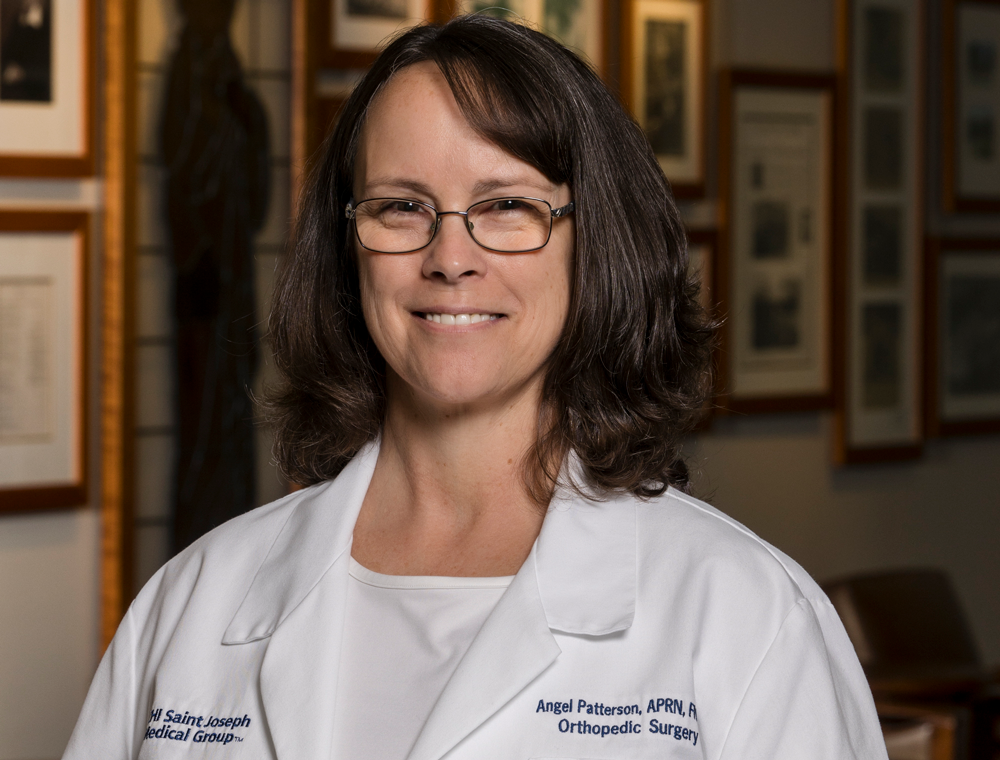Celebrating Our People – Meet Angel
MAR 21, 2025Meet Angel Patterson, APRN with CHI Saint Joseph Medical Group – Orthopedics in London and Corbin.
Read More Additional information about Celebrating Our People – Meet Angel
Saint Joseph Hospital and Saint Joseph East are two of the nation’s top hospitals for robotic surgery.
Just a couple of decades ago, the idea of having a robotic surgery would have sounded like something out of a sci-fi novel: nothing but fantasy. Today, physicians across the globe use robot-assisted surgery to perform all types of procedures.
Used in a variety of specialties, surgical robots aren’t just neat pieces of technology — they’re powerful tools that offer great benefits. Surgeons at Saint Joseph Hospital and Saint Joseph East are among the best in the country for using surgical robots. In fact, both facilities became Lexington’s first accredited Centers of Excellence in Robotic Surgery by the Surgical Review Corporation (SRC), a nonprofit patient safety organization.
“For generations, we’ve done surgery the same way,” said John Dvorak, MD, MS, FACS, FACRS, medical director of the robotic surgery program at Saint Joseph Hospital. “All of a sudden, robotic surgery arrived, and we experienced a paradigm shift. Our goal has always been to make life better for patients and surgeons, and robotic surgery makes that possible.”
Instead of large, open incisions, robotic surgery takes place through a series of tiny incisions. This means shorter hospital stays, faster recovery, less risk for infection and reduced scarring.
In 2013, Saint Joseph Hospital and Saint Joseph East adopted the da Vinci Surgical System — the most widely used robot — for use in the operating room (OR). Initially, some surgeons held a healthy skepticism about the robot, wondering if it was just a gadget with no real benefit ... until they saw how precise robotic surgery is. They also saw patients who had good results and were back on their feet faster than ever. Now, the robot doesn’t just improve surgical outcomes, it also attracts the most talented surgeons who want to practice where robotic surgery is standard practice — places like Saint Joseph Hospital and Saint Joseph East.
During robotic surgery, the surgeon doesn’t stand over the patient. Rather, the surgeon sits at a console in the OR. Nearby, video cameras and other tools are positioned at the surgical site through tiny incisions. These cameras provide a magnified 3D view of the surgical site.
“I have a lot of patients ask how robotic surgery works,” said Amanda Anderson, MSN, RN, unit manager for preadmission testing, post-anesthesia care unit, outpatient surgery and COVID-19 testing clinic. “While it sounds like a robot is performing the surgery, it’s 100% surgeon-controlled.”
A real-time video feed guides the surgeon throughout the procedure. Using handheld joysticks, the surgeon moves the robot’s arms to remove tissue, reconstruct damaged tissue and perform other tasks.
Following surgery, the small incisions are closed and covered with an adhesive bandage. Within a couple of hours, the patient transfers to a hospital room where he or she is able to walk, sit upright and eat and drink immediately. Patients who once required five or six days of hospitalization now go home in half that time. Some can even return home the same day.
In Dr. Dvorak’s colorectal surgery practice, use of the robot has many specific benefits, including the reduced likelihood of needing a future surgery. But Saint Joseph Hospital and Saint Joseph East didn’t earn recognition from the SRC for colorectal surgery only. They are also the first hospitals in Kentucky recognized and accredited for robotic surgery excellence in five disciplines:
Patients who turn to accredited facilities enjoy fewer complications and greater overall satisfaction because the SRC only accredits the best of the best. Earning this recognition doesn’t come easily. Every aspect of the surgical experience is critiqued. SRC inspectors review preadmission testing and scheduling. They study the hospitals’ post-surgical care and education. Most importantly, they look for great surgical outcomes on a consistent basis. According a SRC survey, hospitals that achieve accreditation report decreased complications, improved efficacy and patient safety, and better team cooperation and patient satisfaction. So what’s next for Saint Joseph East and Saint Joseph Hospital? Continued monitoring. Continued improvement. Continued excellence.
“Our highly trained physicians are committed to the best, latest and safest technology for our patients,” Anderson said. “We look forward to continuing our service lines and offering even more robotic procedures in the future.”
A version of this article originally appeared in the Fall 2021 print edition of Spirit of Health.

Meet Angel Patterson, APRN with CHI Saint Joseph Medical Group – Orthopedics in London and Corbin.
Read More Additional information about Celebrating Our People – Meet Angel
Three new surgical robots offer exciting new options across CHI Saint Joseph Health.
Read More Additional information about The Future of Surgery Is Here
Chris Clark wears two hats in his work for CHI Saint Joseph Medical Group in Lexington, splitting his time as an APRN at CHI Saint Joseph Medical Group – Primary Care and as an IT trainer in the ministry’s electronic medical records system, Epic.
Read More Additional information about Celebrating Our People – Meet Chris
Fill out the form below to receive monthly health news and information to your inbox.
Spirit of Health magazine's print edition is distributed quarterly and focuses on topics related to our CHI Saint Joseph Health purpose and values.